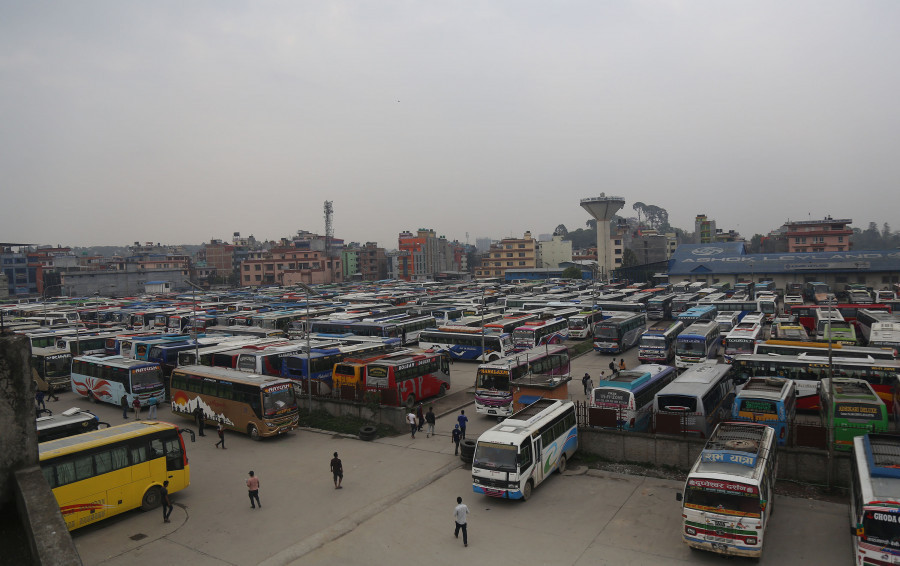National
Official plan to resume public transport worries public health experts
Authorities looking at the second week of July to resume services. Guidelines being prepared to adhere to social distancing and safety of passengers and staffers.
Anup Ojha
Faced with growing demands from entrepreneurs to allow public transport to resume, officials say they are preparing guidelines to do so.
Transport officials say they understand the problems public transport operators face due to the lockdown, and if things go as planned, buses could return to the roads by the second week of July. But they will have to comply with strict guidelines to prevent the transmission of Covid-19
“We understand the problems being faced by public transport operators. That’s why a high-level discussion took place on the topic at the Corona Crisis Management Centre,” said Gogan Bahadur Hamal, director general at the Department of Transport Management. He added that the government is working on guidelines to make it safe for the members of the public to travel in public vehicles at least in areas where chances of transmission of Covid-19 are low.
“If everything goes as planned, the government plans to resume public transportation in the second week of July, the end of the first phase of easing of the lockdown, ” said Hamal.
He said that if public vehicles are allowed back on the road, they will have to follow certain guidelines prepared by the government. For example, public buses can only ferry passengers numbering up to 50 percent of the seat capacity. They might also be asked to follow the odd-even rule, he added. Buses will have to take the temperature of passengers when they board, staffers will have to wear masks and gloves and sanitizer should be made available to the passengers.
The new rules are likely to ramp up the operating cost of buses. But officials are yet to decide how the added costs can be covered, said Hamal.
Meanwhile, public health experts are not convinced about the government’s and the transport operators' commitment towards implementing safety measures in public buses as the number of coronavirus positive cases has been rapidly increasing in the country. By Tuesday, the number of total positive cases has crossed 10,000.
“Even during the lockdown, people breached the rules, they walked holding hands, stayed in groups. I do not think passengers will follow the rule set by the government, and you know the habit of drivers and the conductors,” said Dr Sher Bahadur Pun, a virologist at Sukraraj Hospital. “They are desperate to earn money.”
Although the government, in the second week of June, allowed private vehicles to get back on the road, its odd-even rule has largely been flouted. This also shows that it’s difficult to implement rules, he said.
“There’s a higher risk of transmission of Covid-19 if public vehicles are reopened because public vehicle owners are desperate to earn money, and this might lead to a disaster,” said Pun.
Saroj Sitaula, general secretary at the Federation of Nepalese National Transport Entrepreneurs, who has long been criticising the government for neglecting the plight of public transportation operators, said the public vehicles should be allowed to resume, but with effective surveillance. “The government does not seem to be serious. It should provide health insurance for drivers and conductors,” said Sitaula.
The federation’s data shows that over 400,000 public vehicles have been in the garage for the past three months and the lockdown has affected the livelihoods of thousands of people dependent on the transport sector.
“But the government is showing indifference towards public transportation. Over 80 percent of vehicle owners have loans to repay,” said Sitaula. He requested the government to decide on the issue at the earliest.




 5.55°C Kathmandu
5.55°C Kathmandu.jpg)







%20(1).jpg&w=300&height=200)






